The destruction of the center of Dresden became a symbol of the murderous effectiveness of the Allied carpet raids. However, it was not the most lethal operation of this type. The March 1945 bombing of Tokyo resulted in many more casualties. As a result, nearly 100,000 people died!
The American daily raids on industrial centers in the Land of the Rising Sun did not initially bring the expected results. It quickly turned out that the demolition bombs dropped from high heights were not able to deal a decisive blow to Japanese war production. Therefore, at the turn of 1944 and 1945, General Curtis LeMay, who was in charge of the air offensive against the Empire of the Rising Sun, decided to change tactics.
Old proven methods
The alternative was obvious. The night raids with incendiary bombs were used, well-known from the European theater of military operations. We did not have to wait long for the effects, the more so because, as he rightly notes in his book "The Pacific. Clash of Powers ”Douglas Ford:
[Japanese] cities were particularly at risk because buildings were wooden, which meant incendiary bombs could cause devastating fires to entire neighborhoods. It was made even worse by the lack of security measures. Only a small part of the population could hide in air raid shelters. The water supply system was ineffective in the event of large-scale fires.
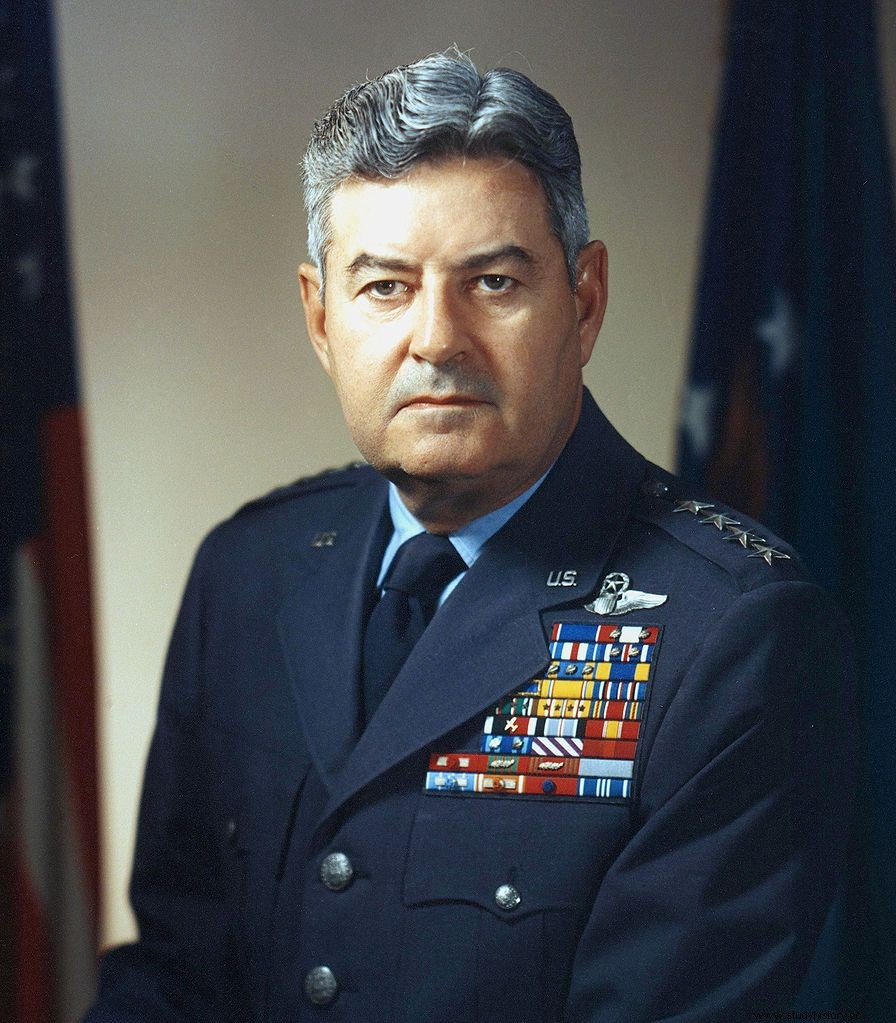
General Curtis LeMay. It was he who sealed the fate of Tokyo and other Japanese metropolises.
The people of Tokyo were painfully convinced of the truthfulness of these words on the night of March 9-10, 1945. It was then that the most murderous carpet raid in the history of World War II took place.
The entire operation was planned on a grand scale. General LeMay assigned as many as 334 B-29 Superfortress bombers. They took off in the evening of March 9 from the airports on the islands of Guam, Saipan and Tinian. Contrary to many previous expeditions, this time the crews were favorable to the weather and the flight over the Japanese capital took place without any obstacles.
Therefore, the Americans had time to listen to the Tokyo radio, which ironically broadcast such hits as:"Smoke Gets in Your Eyes", "My Old Flame" or "I Don't Want to Set the World on Fire" ...
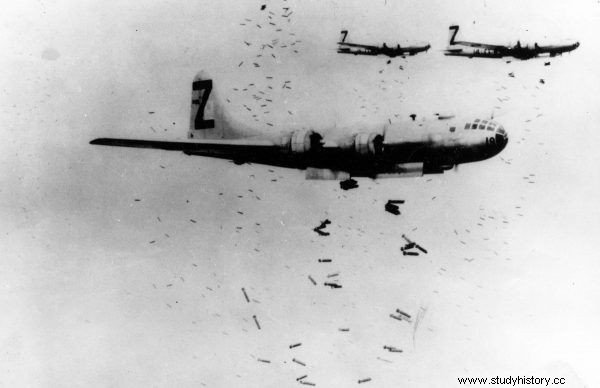
American B-29 bombers drop their hellish load of incendiary bombs. Soon another Japanese city will be on fire.
Finally, shortly after midnight, the pilots of the 329 machines that reached their destination saw the capital of Nippon. Now nothing could stop the hell from unleashing on earth. Especially since the Japanese only threw 40 obsolete fighters against the air armada.
Also, the weak ground anti-aircraft defense was not an obstacle for the Americans. During the nearly three-hour raid, nearly two thousand tons of bombs were dropped. Most of them (1,667 tons) were M69 cluster incendiary bombs.
And the gates of hell opened
While the bomber crews calmly carried out their tasks in the sky, truly Dantesque scenes took place under them. In just a few hours, more than 41 square kilometers of commercial, industrial and residential districts of Tokyo burst into flames.
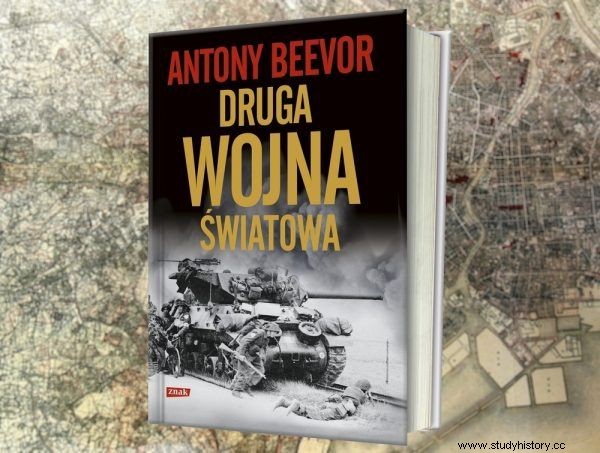
Due to the wooden buildings, the fire spread rapidly, absorbing everything in its path and sucking all oxygen at the same time. As a result, even those who managed to reach the few shelters were killed.
An equally tragic fate awaited those seeking help on the banks of the Sumida River. As Douglas Ford writes in his book:
[all] died as the north wind began to push a giant wave of flames down the river, engulfing anyone in the way. Those who jumped into the river either drowned or suffered burns so severe that they were unable to swim to the shore. The next morning, according to locals' accounts, Sumida was a sea of charred corpses.
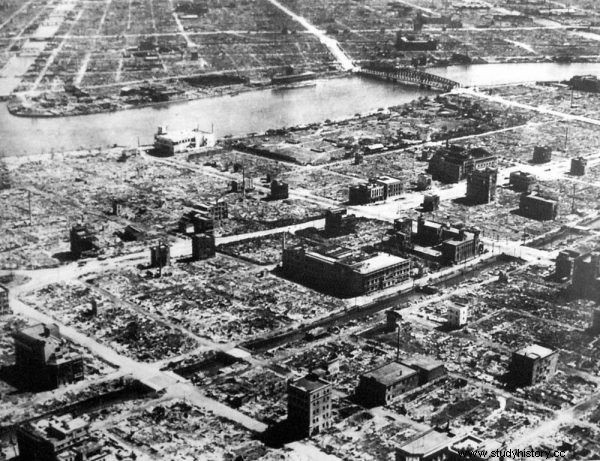
A photo of one of Tokyo's districts was taken on March 10, 1945. You can clearly see the scale of damage caused by a gigantic firestorm.
It took many hours to control the fires, and the effects of the enormous firestorm were terrifying. The official statement of the Japanese authorities spoke of over 83,000 dead and 40,000 wounded and 250,000 burned buildings.
So - as Antony Beevor rightly points out in his monumental work "The Second World War" - the number of victims far exceeded that after the second atomic bomb was dropped on Nagasaki . These estimates - shocking though it may be - still seem understated. The reports of the Tokyo fire brigade mentioned as many as 97,000 killed and 125,000 wounded !
The Americans paid for this unprecedented slaughter with minimal losses. Japanese AA defense only shot down 14 bombers - just 4.5% of all machines involved in the raid.
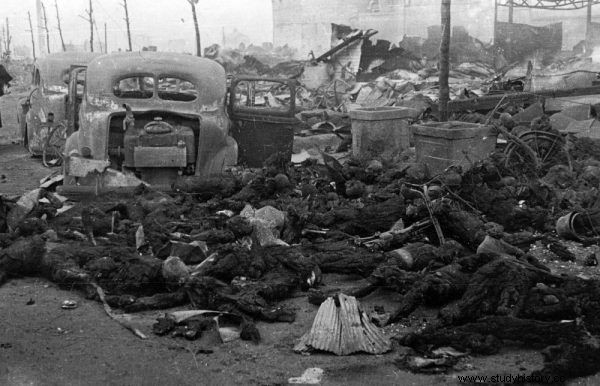
The raid also resulted in unimaginable human casualties. Up to 100,000 people could have died there. civilians, and more than twice as many were injured.
General LeMay was so pleased with the results of the entire operation that in the months that followed, Osaka, Kobe, Nagoya and Yokohama suffered a similar fate as Tokyo. Another tens of thousands of civilians died in each of these metropolises. In this situation, there has been a massive exodus from cities to rural areas.
As a result, in the summer of 1945, the population of the largest urban centers fell to forty percent compared to the number before the outbreak of the war . US Army Air Force Command has finally achieved its goal. The Japanese arms industry has been brought to its knees.
